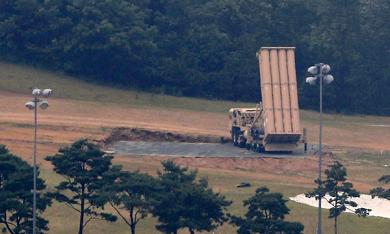by WorldTribune Staff, June 7, 2017
Newly elected South Korea President Moon Jae-In, who has said Seoul must “learn to say no” to Washington, has suspended the deployment of the U.S. THAAD missile defense system in what was seen as a major concession to China.
A senior official from the presidential Blue House in Seoul told reporters on June 7 that the two launchers of the Terminal High Altitude Area Defense system that had been installed could remain but that four launchers that had yet to be deployed would not be set up until the administration completed an environmental assessment, The New York Times reported.

Beijing views the THAAD system’s radar as a threat and has taken steps to punish Seoul economically by curtailing the flow of Chinese tourists to South Korea and punishing South Korean companies in China.
Moon, a former senior official with left-leaning administrations in South Korea, campaigned on a more accommodating policy toward North Korea to resolve the nuclear crisis. He has encouraged South Korean aid groups to visit North Korea, although the North has rejected those offers because Seoul has supported new United Nations sanctions, the Times report said.
“I think he is trying to find a diplomatic way to slow down the process to placate the business community and placate his political supporters,” said Stephen R. Nagy, senior associate professor of politics and international studies at International Christian University in Tokyo.
Moon’s critics have charged he intends to align with China on critical strategic policy. Beijing has been adamant on the THAAD issue.
When Lee Hae-Chan, South Korea’s special presidential envoy, visited Beijing last month, President Xi Jinping “did not concede anything” during their meeting, the Times report said.
The THAAD system officially went into operation in late April on an abandoned golf course in Seongju, 135 miles southeast of Seoul, when two of six launchers were installed. United States military officials have said that the system is already “operational and has the ability to intercept North Korean missiles.”
Letters to the Editor __ Subscribe to Geostrategy-Direct __ Support Free Press Foundation
